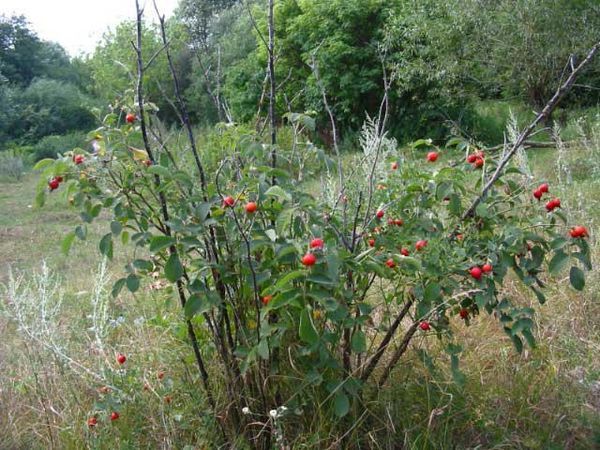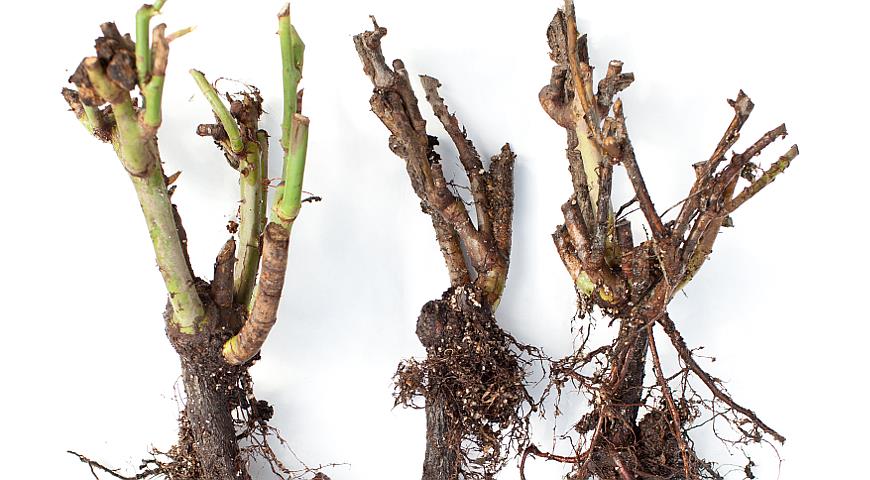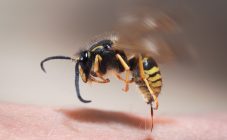Content:
- General information why the rose was reborn into a rosehip
- How to distinguish a rose from a wild rose
- Why does a rose go into a rosehip
- What do flower growers think
- How to understand that a rose is reborn into a rosehip
- How to properly prune a rose so that it does not become a rosehip
- What to do if a rose has turned into a rosehip
- Tips from experienced florists
Many, especially inexperienced gardeners, complain that an ornamental rose bush after a certain time turns into a wild rose hip. Each litter of a decorative culture has a peculiarity to run wild during prosperity. In order to resolve this issue, you need to know what to do if the rose has turned into a rosehip.
General information why the rose was reborn into a rosehip
Initially, you need to distinguish them from each other. Firstly, you need to clarify whether a rose seedling is grafted on a rose hip or is it rooted. A grafted seedling in the lower part of the stem must have a thickening - the place of grafting. The stem below the thickening may vary in color. Rooted roses have no place for grafting.
When removed in time, the delicate rose can be avoided. Indeed, in this version, you will have to completely cut off the bush. When growing rose hips, you should choose the right approach in advance to avoid unnecessary problems. Since the vaccine is usually located underground. Therefore, the shoots of rose hips begin to grow out of the ground. They must be removed immediately after they increase.
Many, of course, do not know about this and often wonder how to trim a rose neatly so that it does not become a rose hip. Initially, you should excavate the soil where the ornamental culture grows to the very place of grafting and, accordingly, carefully cut the shoot to the very base.
How to distinguish a rose from a wild rose
Many are worried about the question of how a decorative rose differs from a wild rose. As a rule, there are 4 differences that will make it possible to distinguish rose seedlings from rose hips: Young shoots of a rose are dark red, gradually they turn green and woody. In the wild rose, on the other hand, young shoots of a bright green hue appear. A leafy branch of a rose has three or five leaves. There are seven leaves on a rosehip branch. Rose leaves are rather large, smooth, shiny, dark green in color. In the wild rose, the leaves are lighter, smaller, have a pronounced structure and do not shine. The thorns of pink shoots are large and rarely located on the stem.
Decorative flowers are difficult to distinguish from each other. When the shoot is ripe, then it is easy to recognize, because the color of the roses turns brown. However, the shade of flowers depends on the varieties of the plant. Therefore, initially you need to find out what kind of decorative culture the florist is planting.
Where there is a temperate and cold zone, a wild rose begins to bloom at the end of May. However, the subtropical evergreen savage can appear at any time of the year. The fruits are different in that they are really fleshy and juicy.Inside the rose hips there are bristly villi, which, as it were, wrap up the hard nuts.
Why does a rose go into a rosehip
Rose is primarily a cultivated form of a plant belonging to the genus Rosehip and the pink family. To confuse a decorative rose with a rose hip is not so easy. The rose has larger flowers and large petals. For example, wild rose hips usually grow pink in color, and garden forms can have white or bright pink, cyclamen flowers. It should be noted that the rosehip produces a small, round fruit that can be freely used in food.
As a rule, a cultivated rose is transformed and grown on a rootstock, which is a rosehip or canina rose. Some growers prefer to plant roses and then grow them on their own roots.
Many people often wonder how to tell a rose from a rose hip. Rose leaves are usually dark green in color. Typically, the petals are hard and leathery, with a glossy, rounded tip. In the dog rose, the opposite is true, the petals are small and rough, giving off a light green or gray-green tint. Their matte leaves with a pointed tip are difficult to confuse with other plants. In addition, you need to pay attention to the thorns of the decorative culture. They are rare and large. Given all these features, you can easily distinguish plants from each other.
What do flower growers think
Some growers argue that the difference between an ornamental culture and a rosehip is by the number of leaves. But in fact, the process becomes much more complicated when you need to study climbing roses. They, in turn, have seven leaves. After the timely identification of the plant, you can find a way to deal with the regeneration of the rose.
Many people immediately panic and do not know what to do if the decorative rose has grown into a wild rose. Initially, you need to carry out a number of wellness procedures:
- excavate the soil, get the root system;
- timely determine the place of the rose scion on the stock;
- carefully cut the wild escape;
- take iodine and spread on all the debris and cuttings of the plant.
Sometimes shoots can grow in large numbers. Because of this, the process of domestication is significantly complicated. In this case, you need to move on to your own roots. That is, the grower must start removing the rootstock.
How to understand that a rose is reborn into a rosehip
Rosehip can be a stock for a wide variety of rose varieties. The variety is: standard, tea, climbing, etc. The grafting process is very simple. To do this, you do not need to choose a variety of decorative culture.We'll have to take a small stalk with a couple of buds and plant it on a young and healthy rose hip bush. If the graft takes root easily and quickly, you can cut the rosehip shoot. This process can cause the plant to reverse development. Why does a rose turn into a rosehip? What to do in this case will help the advice of an experienced grower. Instead of a rose, a rosehip can grow only in the following case:
If the wrong purchase of a seedling was made, then you can expect the transformation of an ornamental culture into a rosehip. Therefore, you need to choose a seedling very carefully. Since over time, wild growth will appear, and in the future the seedling will die.
If a rose is reborn into a rosehip and the florist does not know how to remedy the situation, it is necessary to study agricultural technologies. Having studied the features of the protection of the vaccination site from a variety of adverse factors, you can help the plant bloom in the future without unnecessary problems.
Not every person is born a professional florist. It is important to note that it is not so easy to identify the first signs and changes of a growing flower. You just need to closely monitor the process of their growth and perform the above actions.
How to properly prune a rose so that it does not become a rosehip
A popular question is why roses are usually reborn into rose hips and what to do worries many professional flower growers and beginners. Experts share their advice to help people solve a problem.
Secret number 1 - pinch the escape
Mostly flower growers plant roses in spring, so their roots are stronger. In this case, the young shoot will begin to outgrow. It is during this period that you need to monitor their growth. If the shoot is growing quickly, then you need to cut off the fourth leaf in time. After a while, you can understand that a new young bush is growing. Symmetrically developed shoots will already grow on this bush.
Secret number 2 - trimming
Summer pruning is very important for roses - with its help, they get rid of weak, diseased, improperly growing branches. "Blind" shoots are also removed - those that do not have flowers, they shorten the shoots that thicken the bush. Remember that a dense bush is easier to attack diseases.
Faded flowers are regularly cut - they give the bush an unkempt look. The cut is made above the second or third leaf from above (it should be a well-developed five-leafed leaf) on a well-developed bud looking outward, which can give a high-quality flowering shoot. The cut is placed 0.5 - 0.8 cm above the kidney.
At the end of summer, wilted flowers cease to be removed. If they are removed constantly, then this causes the growth of shoots, which in August is already undesirable. The flowers of once-blooming park roses are left, and by the fall they have decorative fruits.
Secret number 3 - wild growth is removed
Have grafted roses below the spot. They are distinguished by smaller light foliage and more thorns. Wild growth grows rapidly, weakens the plant and can lead to the death of the grafted part. As a result, instead of a grafted rose, your garden will be decorated with an ordinary rosehip bush.
You need to cut out the growth as soon as it appears. The root collar is freed from the ground and the shoots are cut off at the base. If you cut at soil level, it only helps the growth of shoots, and the bush will give several instead of one.
What to do if a rose has turned into a rosehip
First of all, you need to pay special attention to the quality of the seedling. Choosing a plant in unfavorable places, you can face this problem, which worries many people. When choosing and examining a seedling, you need to look at the location of the vaccination site. In addition, you need to check the color of the stem. An important point is that the shade of rose hips is always green, and the shade of roses is reddish.
Before making a purchase, you need to study the color of the shoot and the features of the leaf plate. In addition, proper care will help prevent changes. As a rule, the timely and correct implementation of all the necessary agrotechnical techniques will avoid problems with the transformation of a rose into a rosehip. Therefore, every florist must create favorable conditions for his plant. You also need to avoid infection of plantings with pathogenic microflora and pests. With a decrease in the stability of the risk of change.
Tips from experienced florists
Growing a beautiful rose on your site is not an easy task in the climate of the middle lane. Severe frosts, temperature changes, drought and rains, acidic, depleted soil are not the conditions to which the queen of flowers is adapted. While the distant relative of this whimsical beauty, the rose hip, is very resistant to cold, frost and drought.
Grafting a queen of flowers on a rosehip is a fairly simple process that copes with several stages:
- The rose to be inoculated must bloom and be budded;
- Cuttings must be cut from the flowers, each must have two buds, the thorns are cut off;
- The roots of the shrub are thoroughly cleared of the earth, if even a small amount remains, the earth may fall on the bare part of the stem and the grafting will not give results;
- An incision is made on the stem, a horizontal incision at least two centimeters long;
- The incision is inserted into the stem with bud without bark;
- The place where the kidney is inserted into the incision is fixed with a tape. The root with the grafted stem is placed in moist soil.
In conclusion, it should be noted that the best vaccination time is summer, in the rarest cases, the vaccination can be done in February. A grafted rose must be carefully looked after so that it takes root and begins to grow. The main two rules are abundant watering and thorough cleaning of the soil from weeds. A year later, when the seedlings become strong enough, they are dug up and transplanted to the place where it will continue to grow.

















